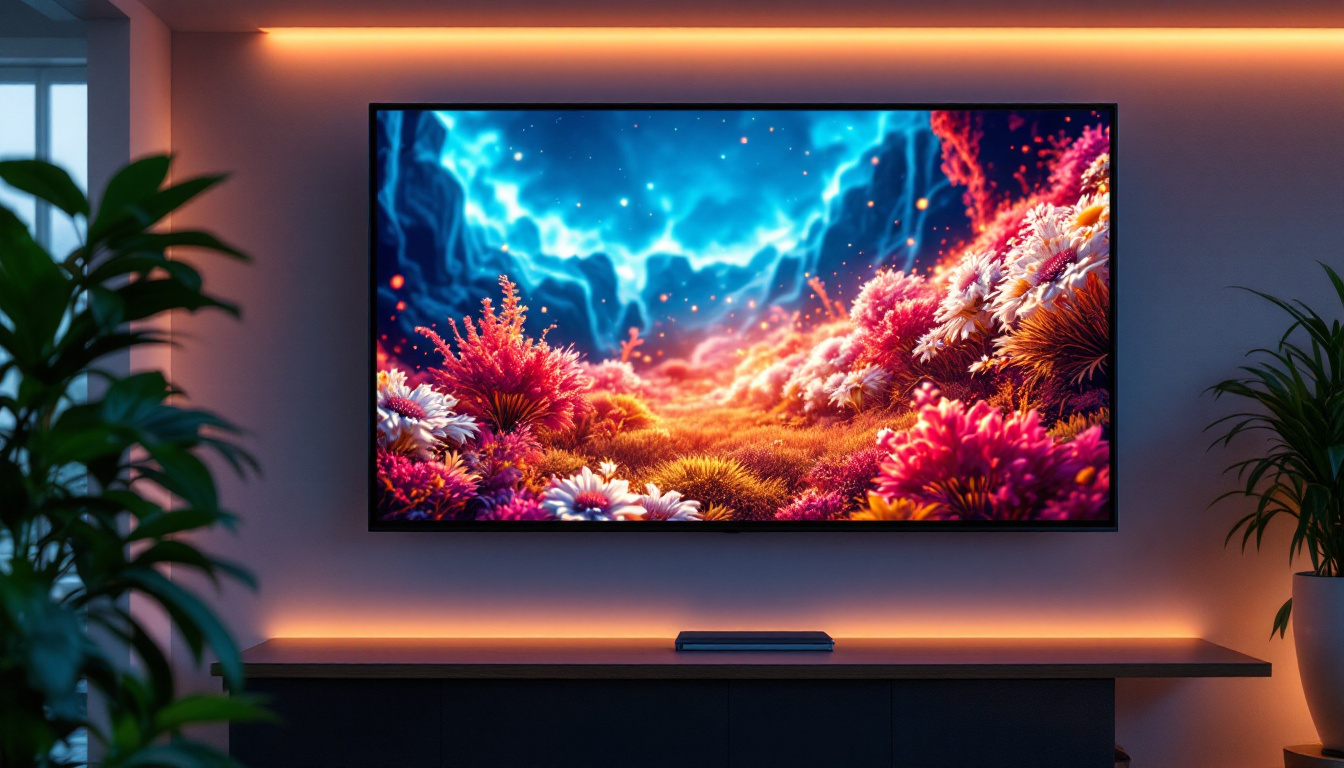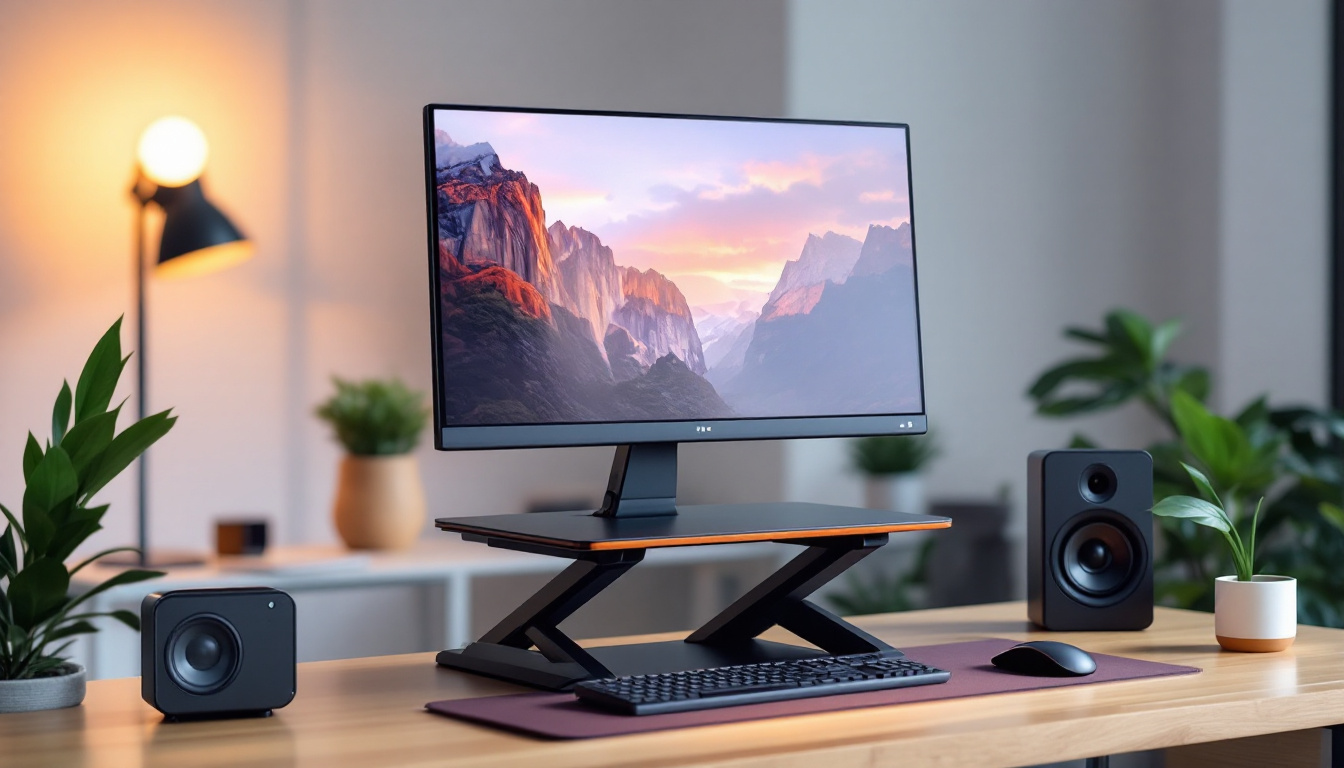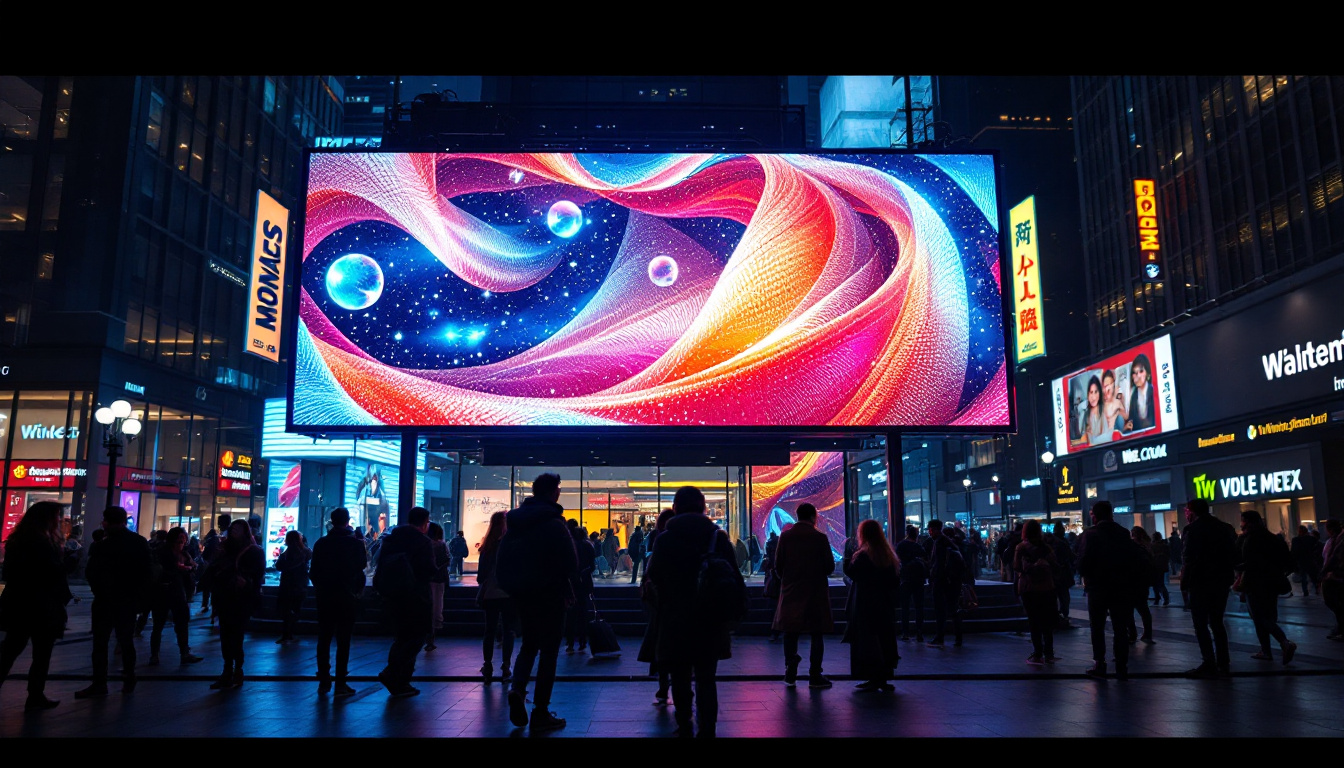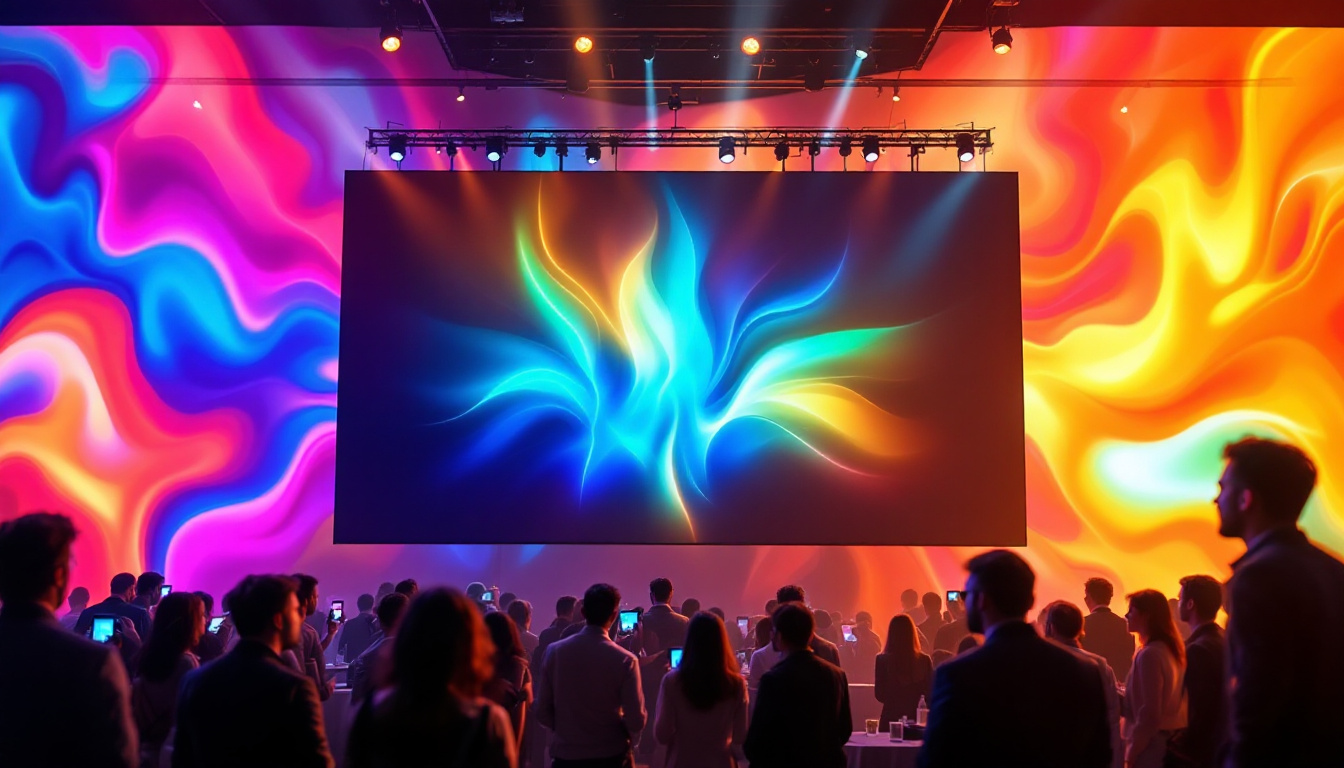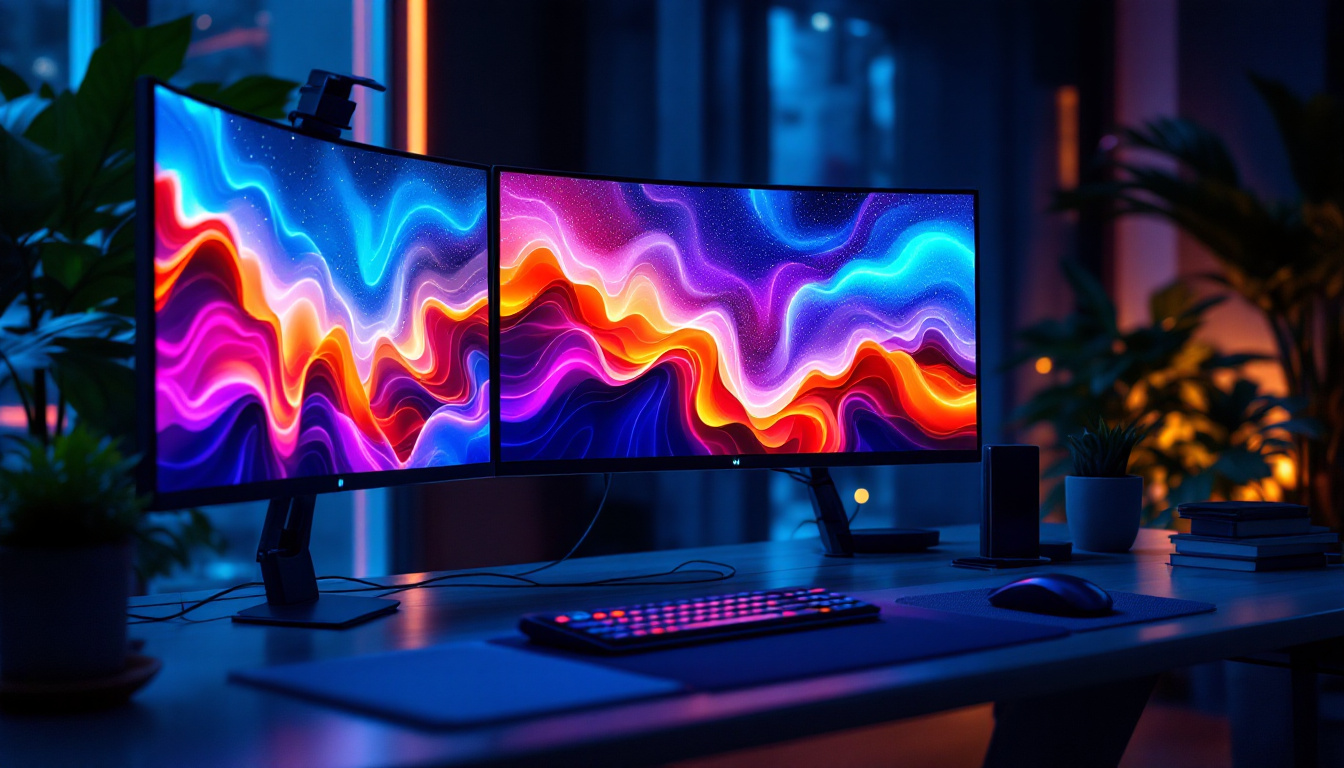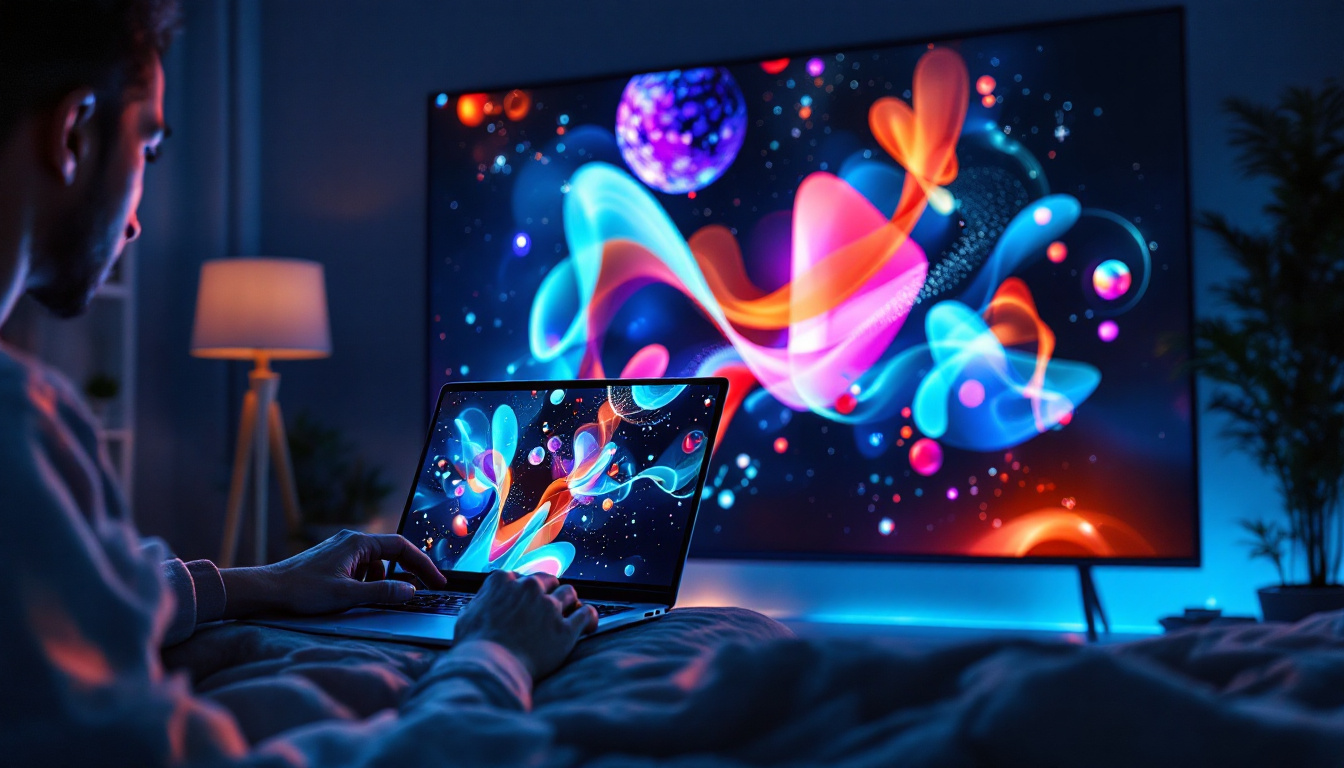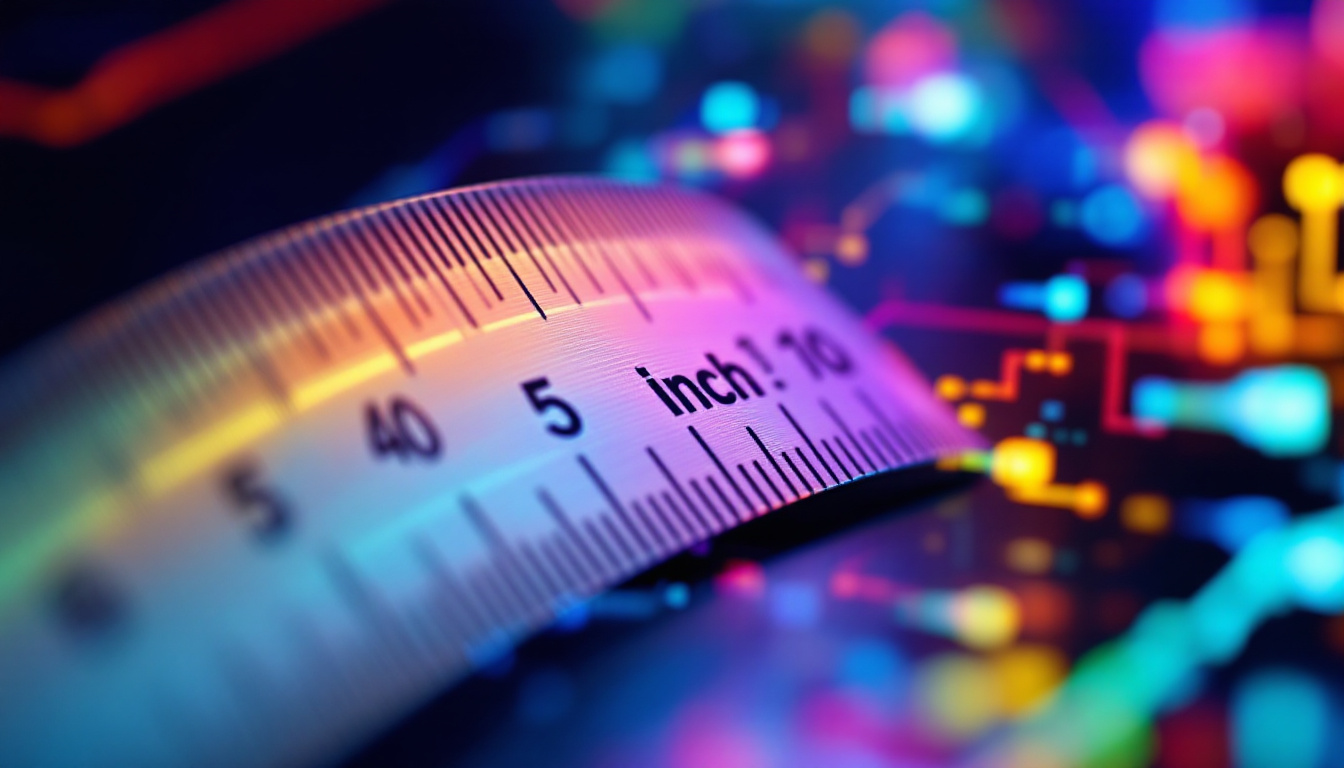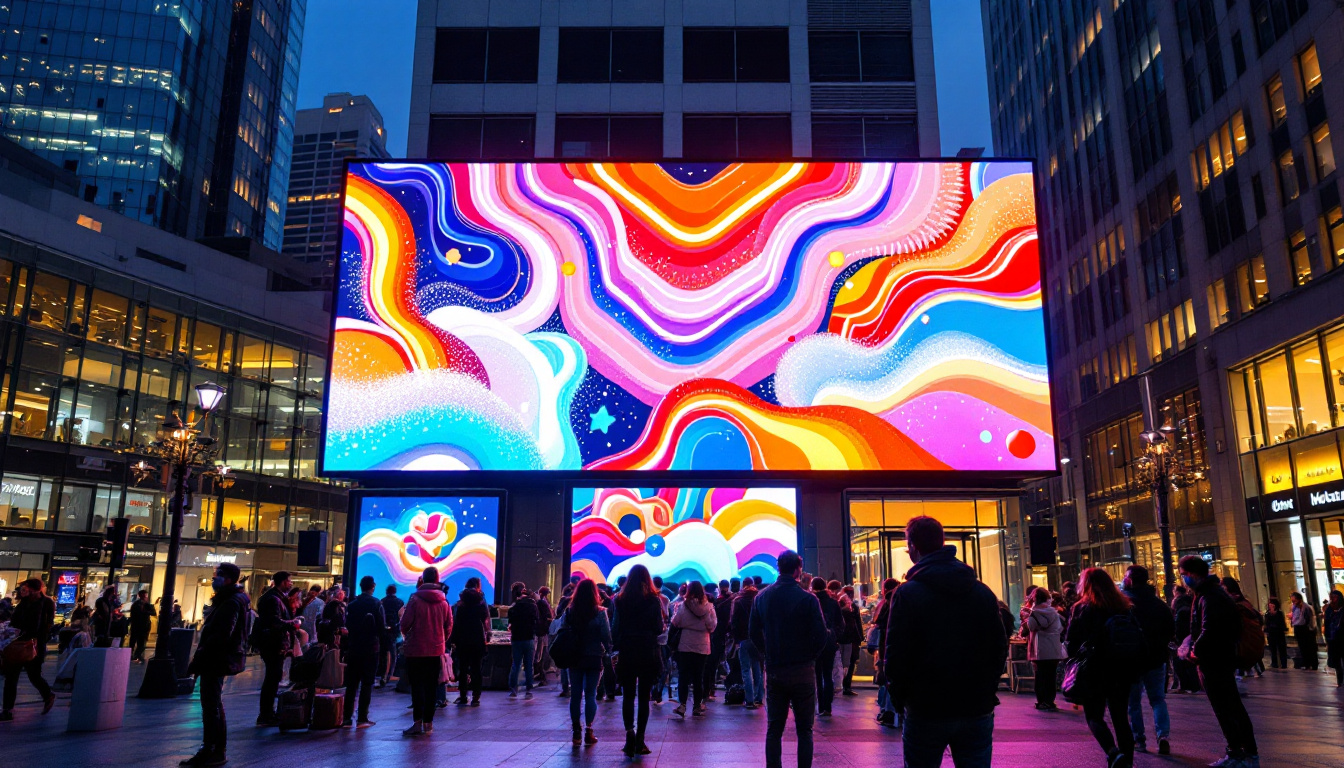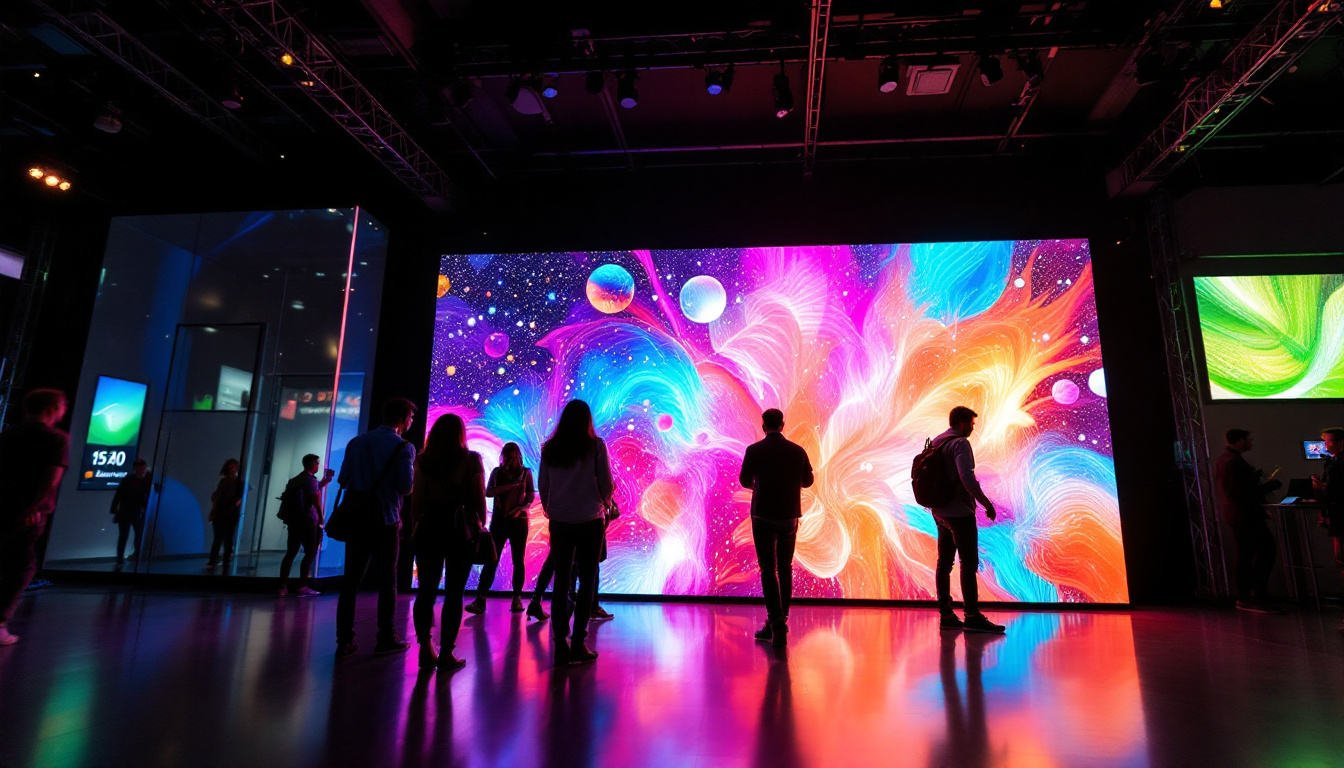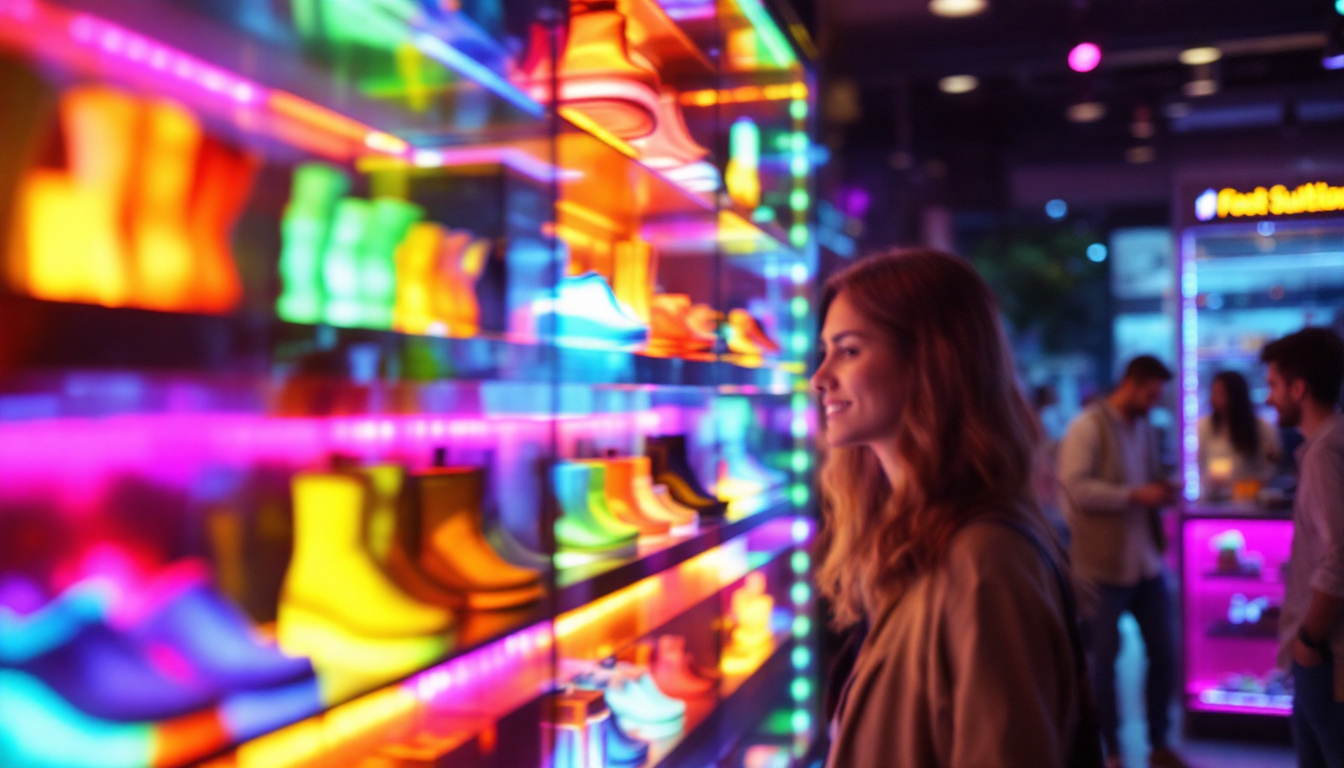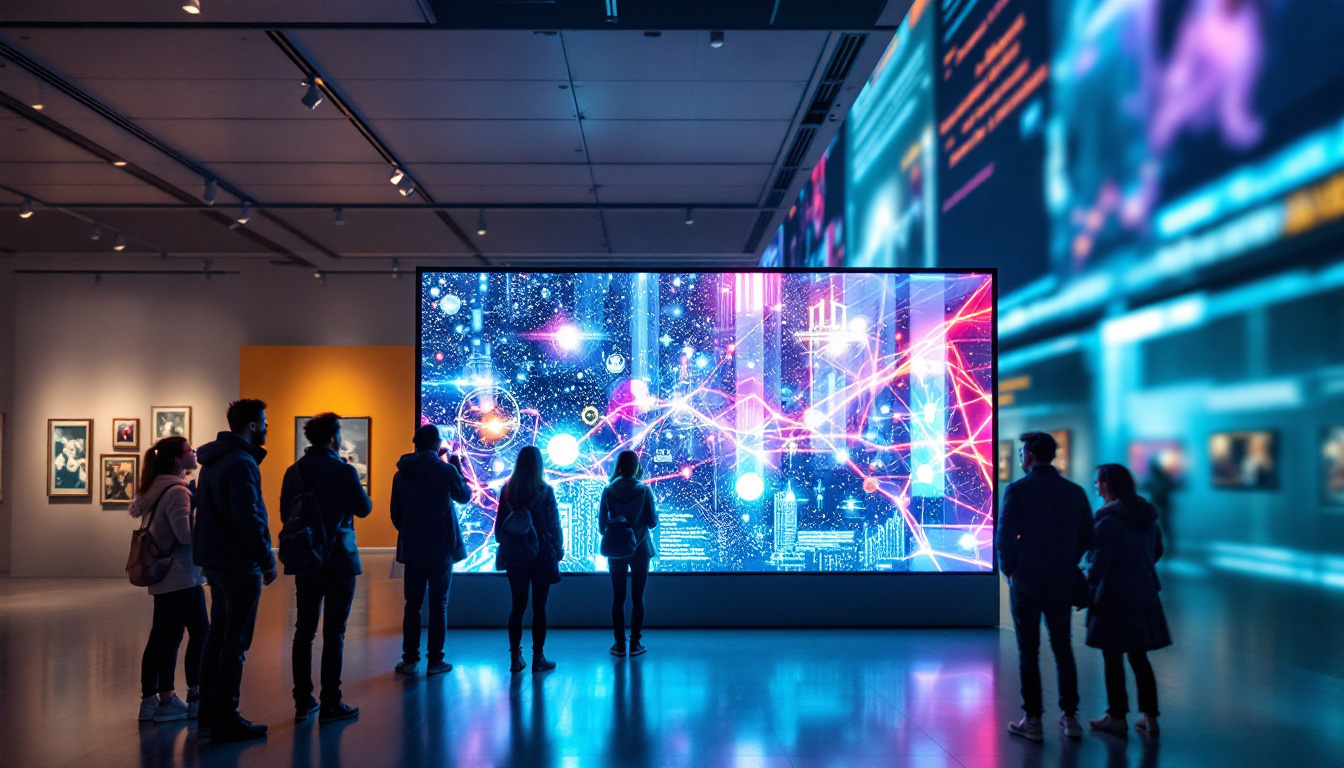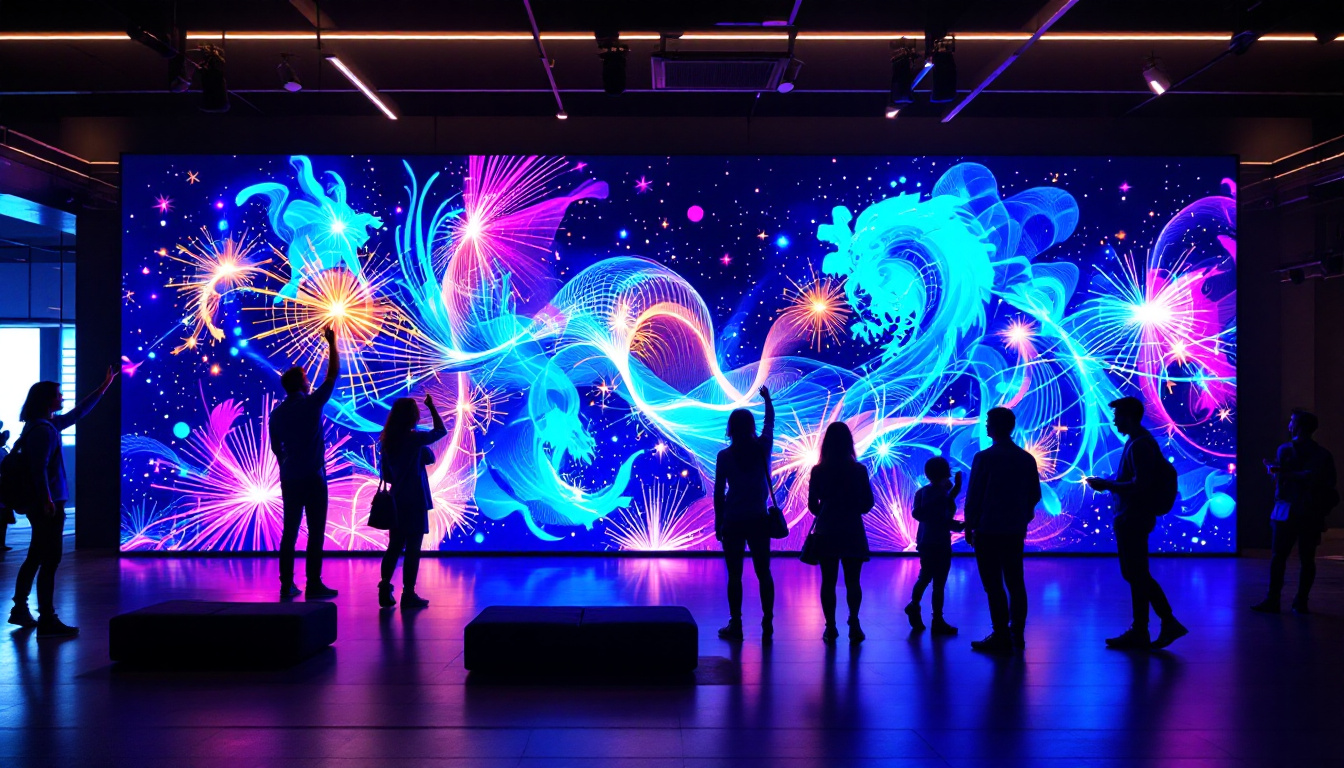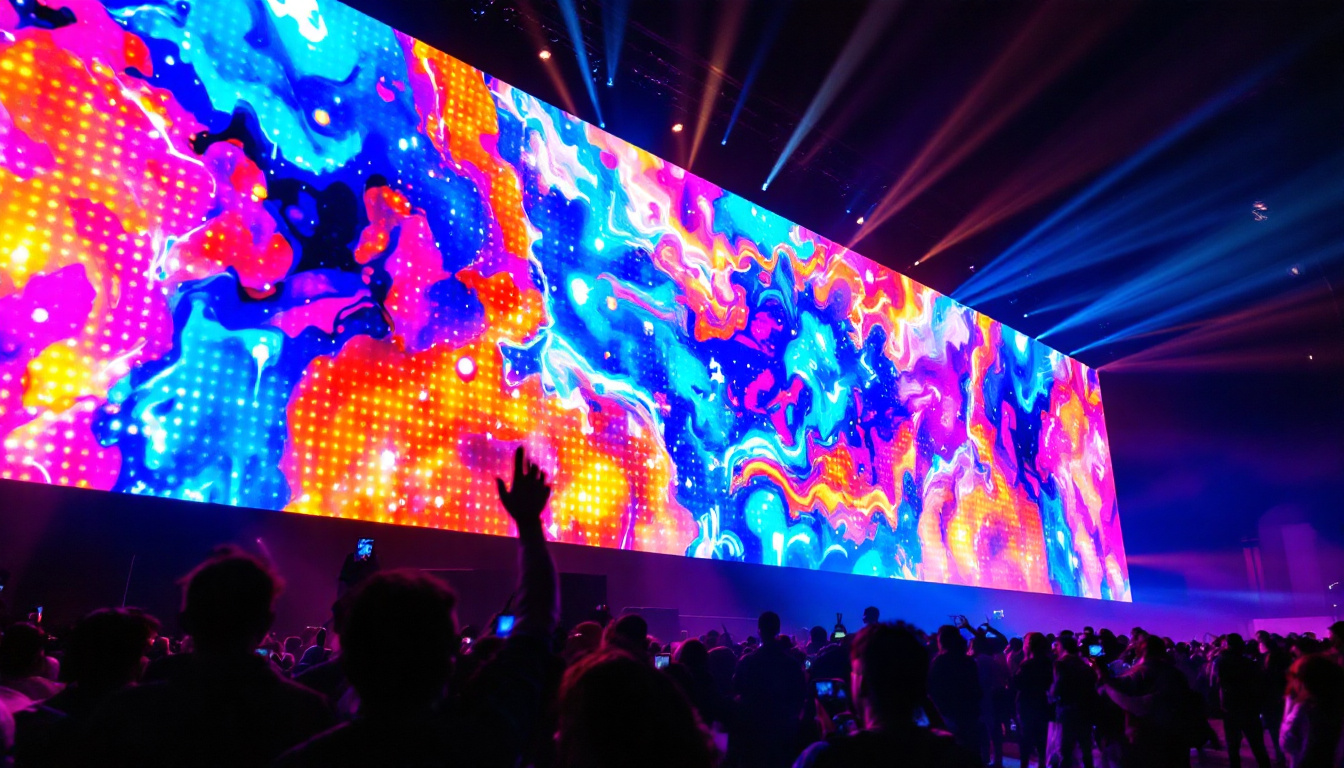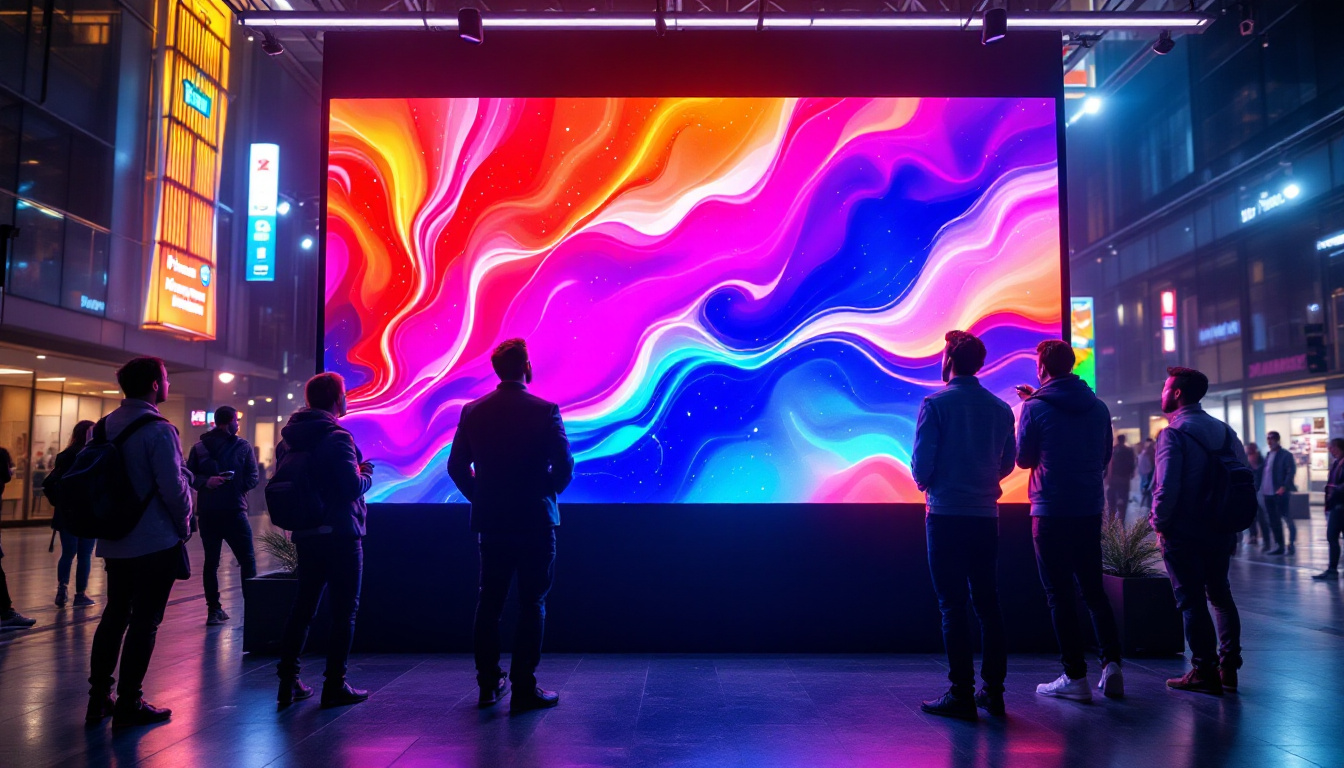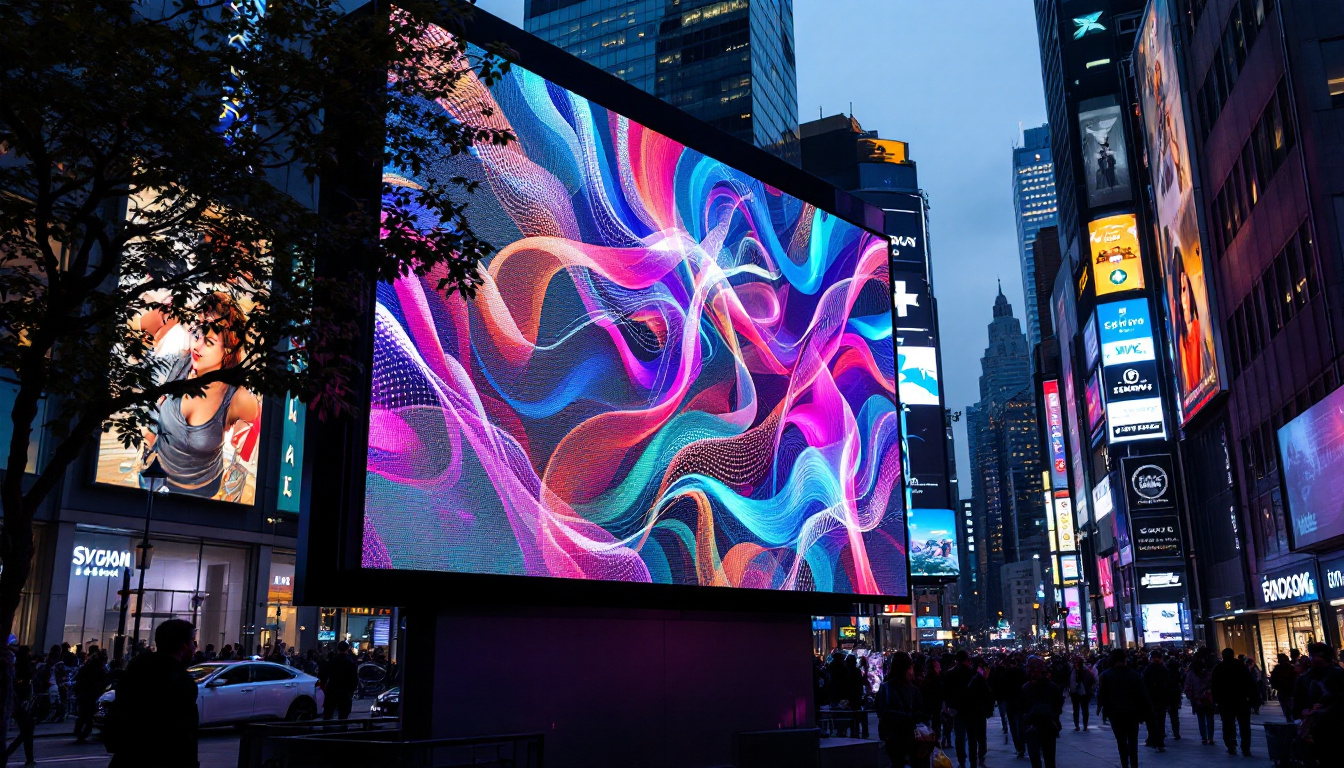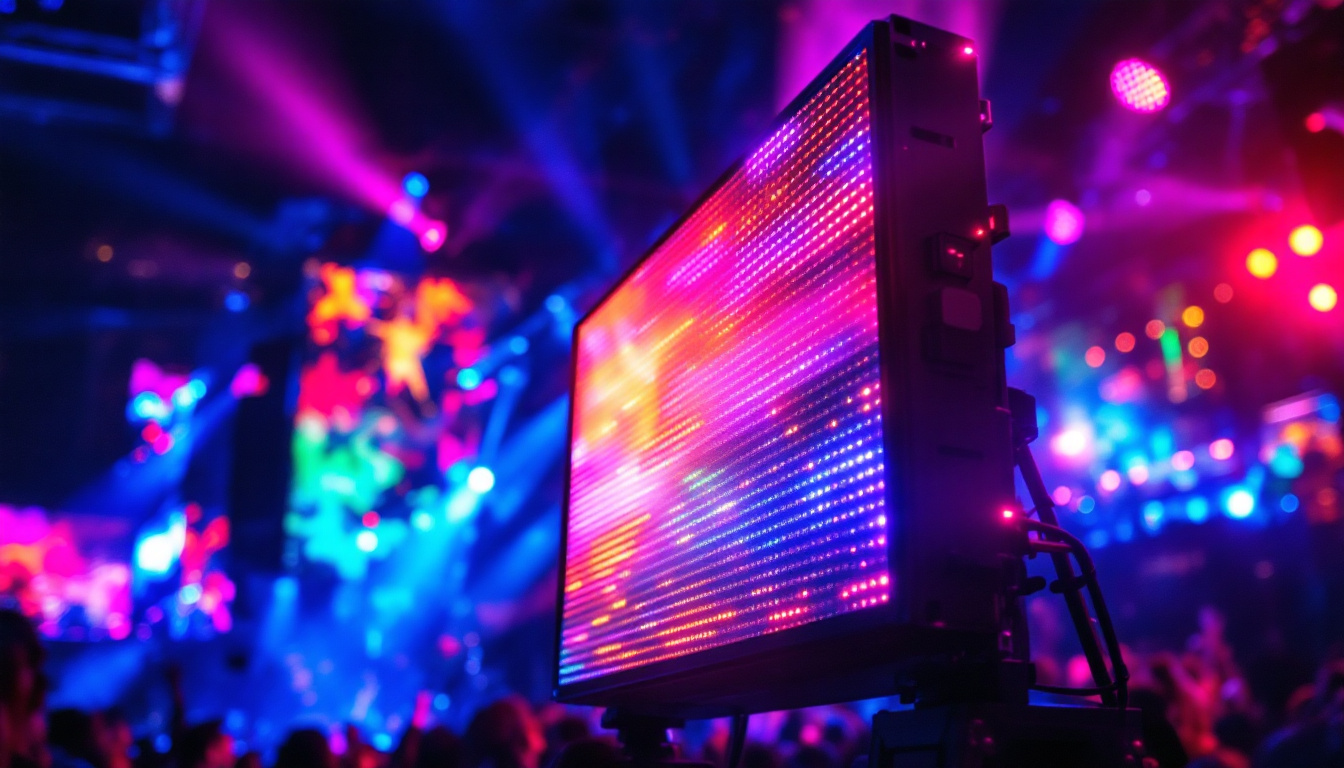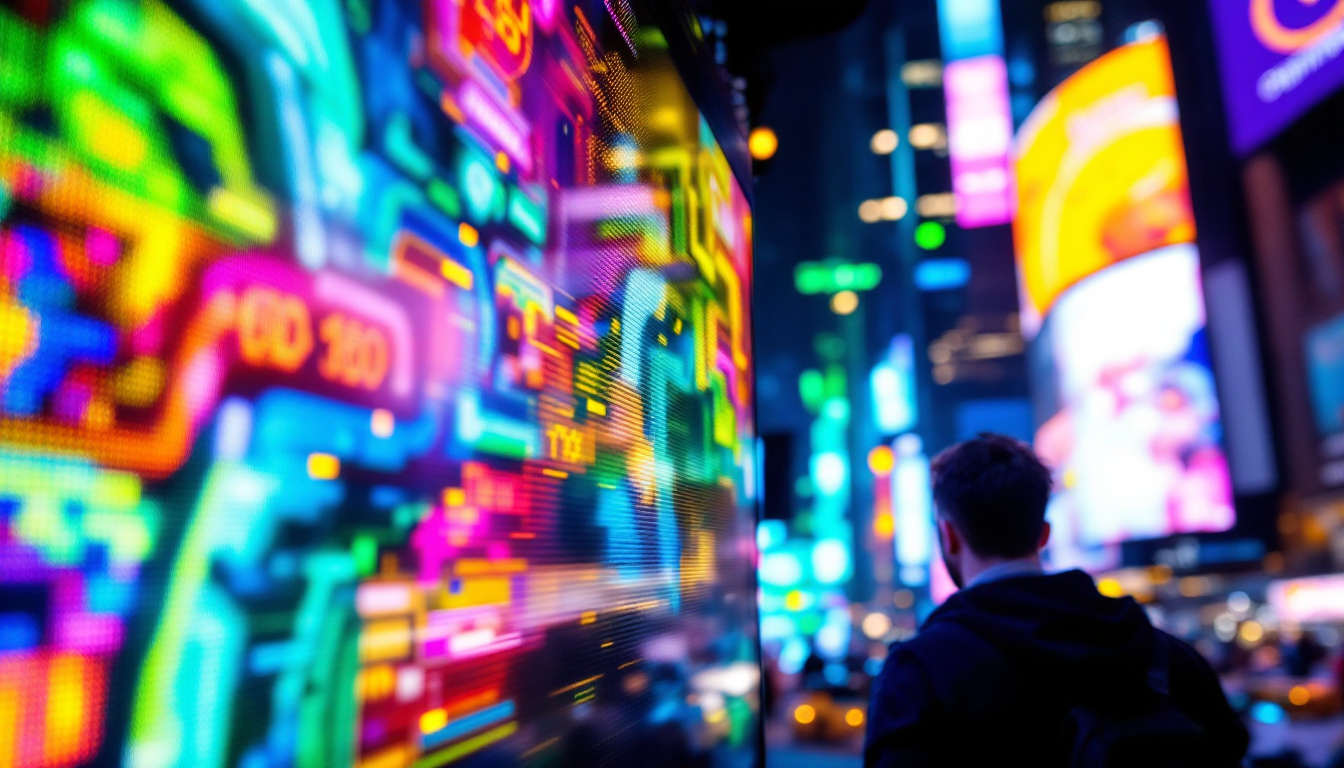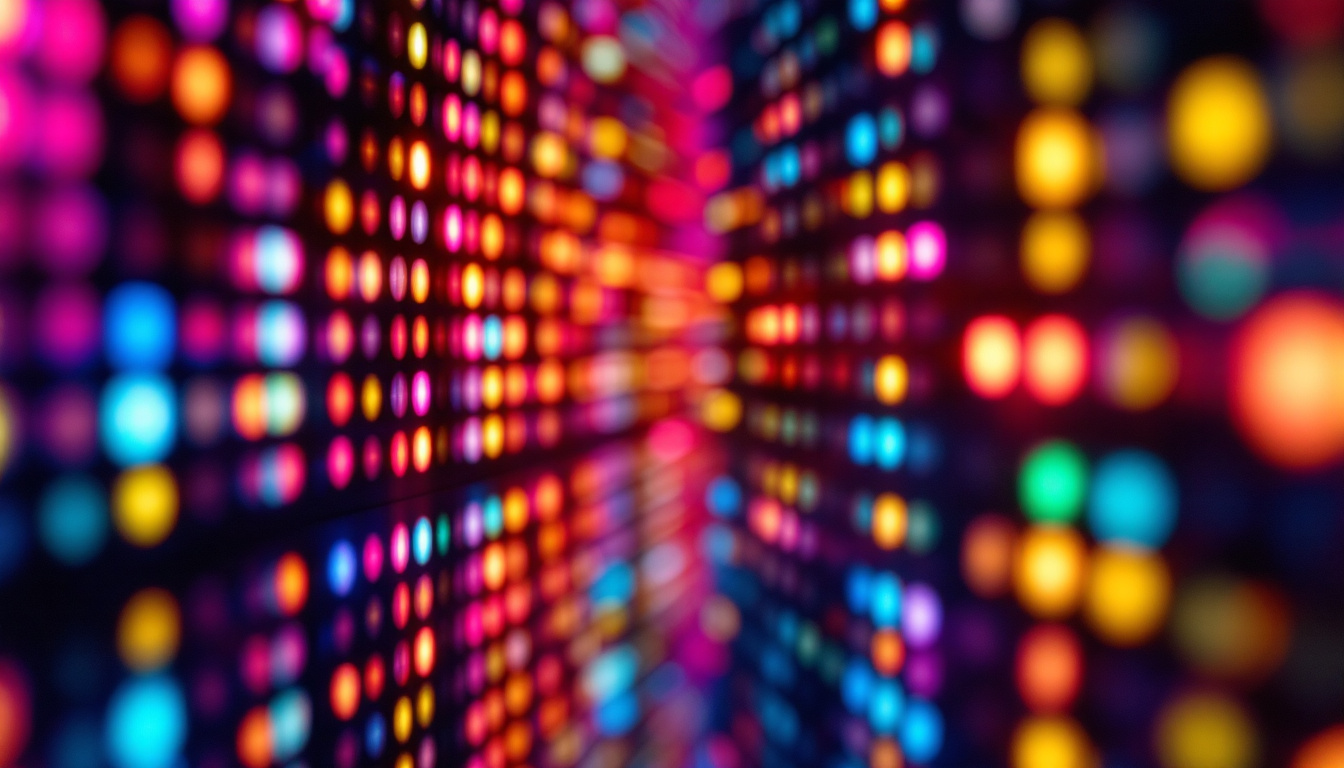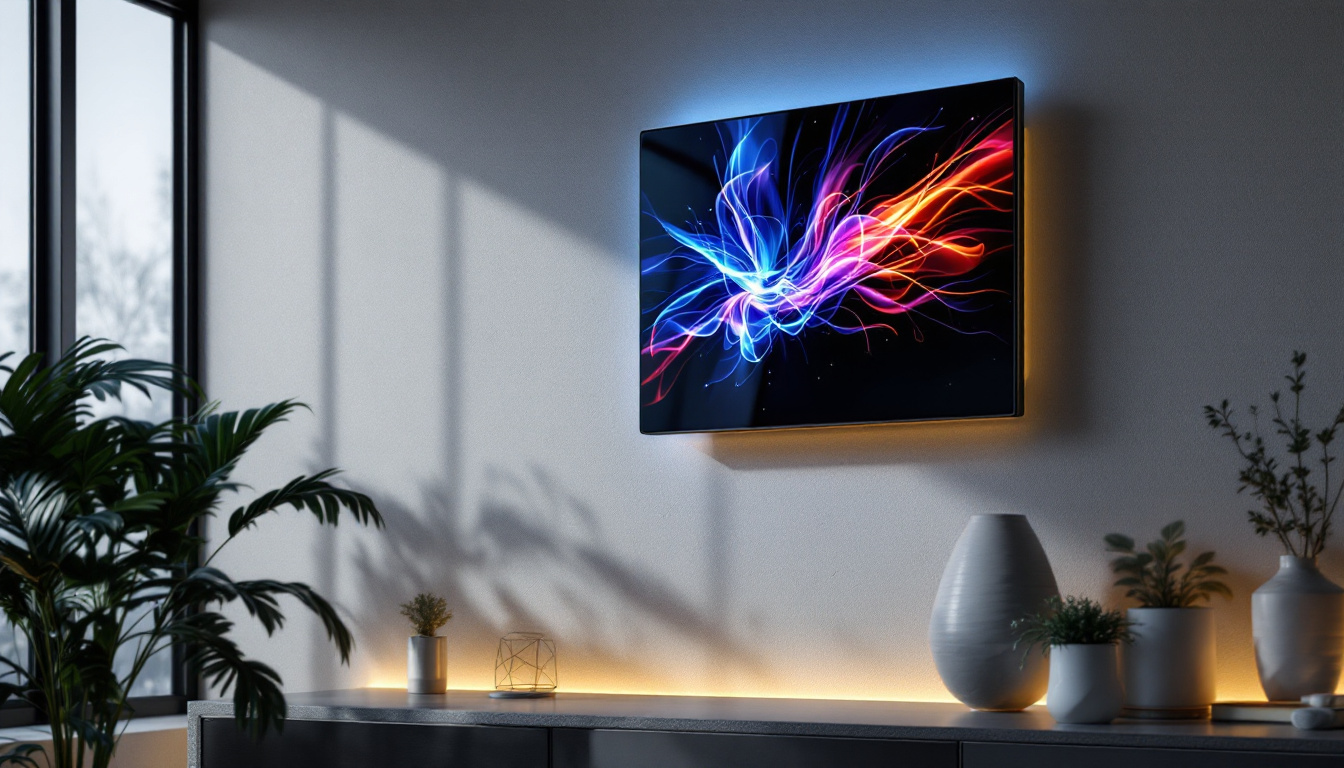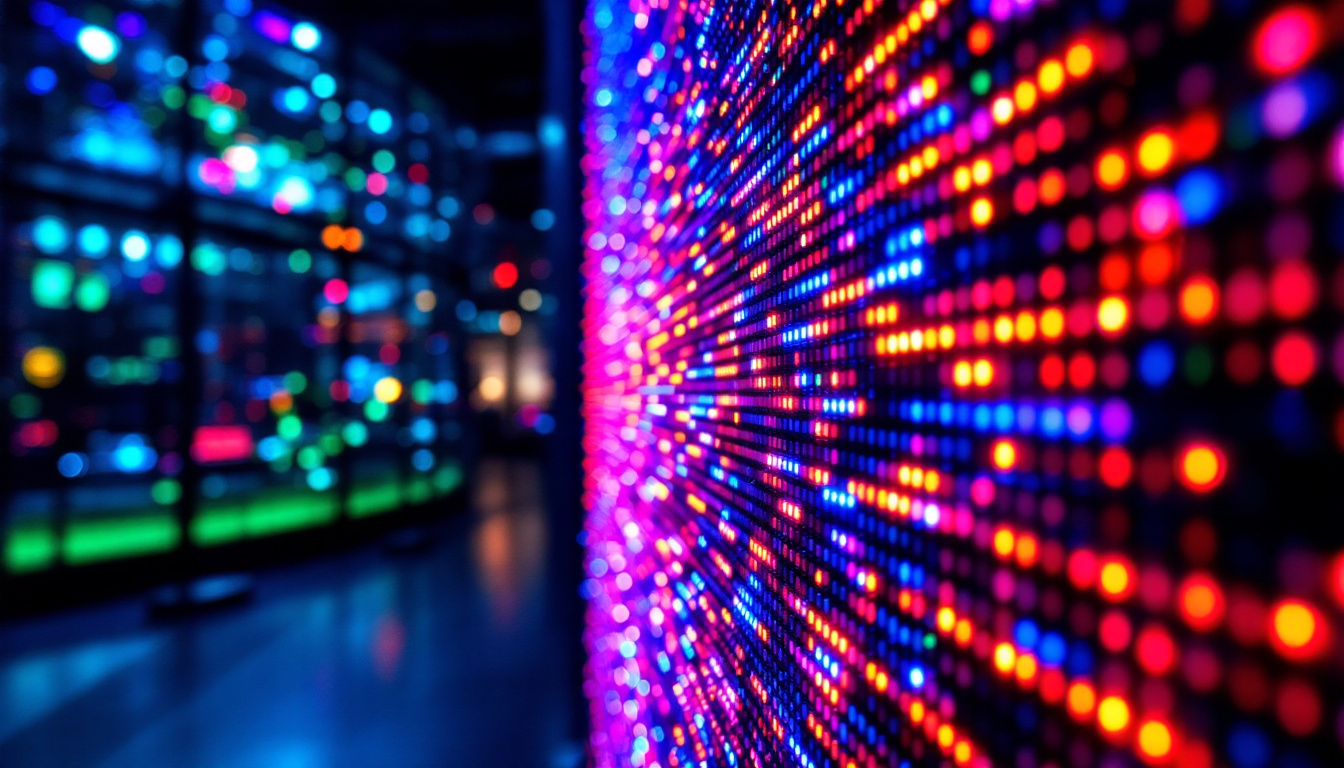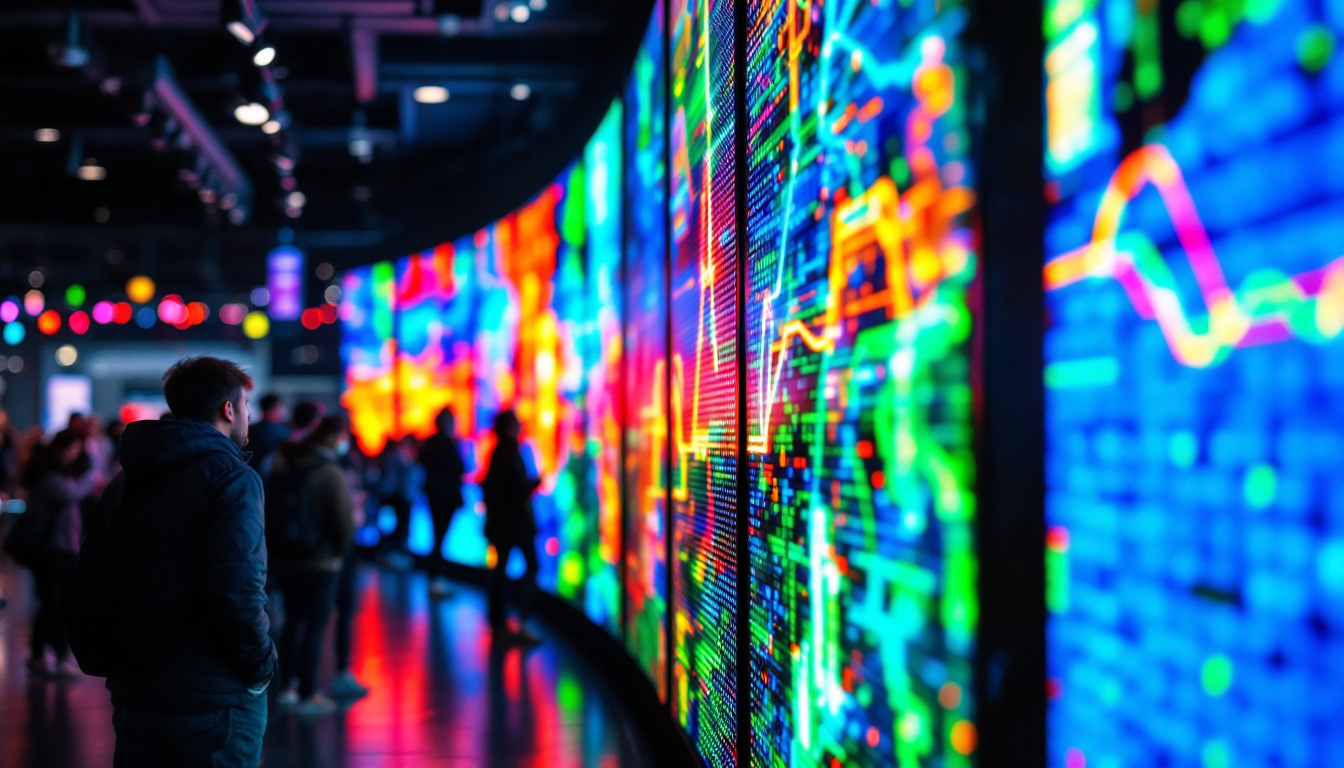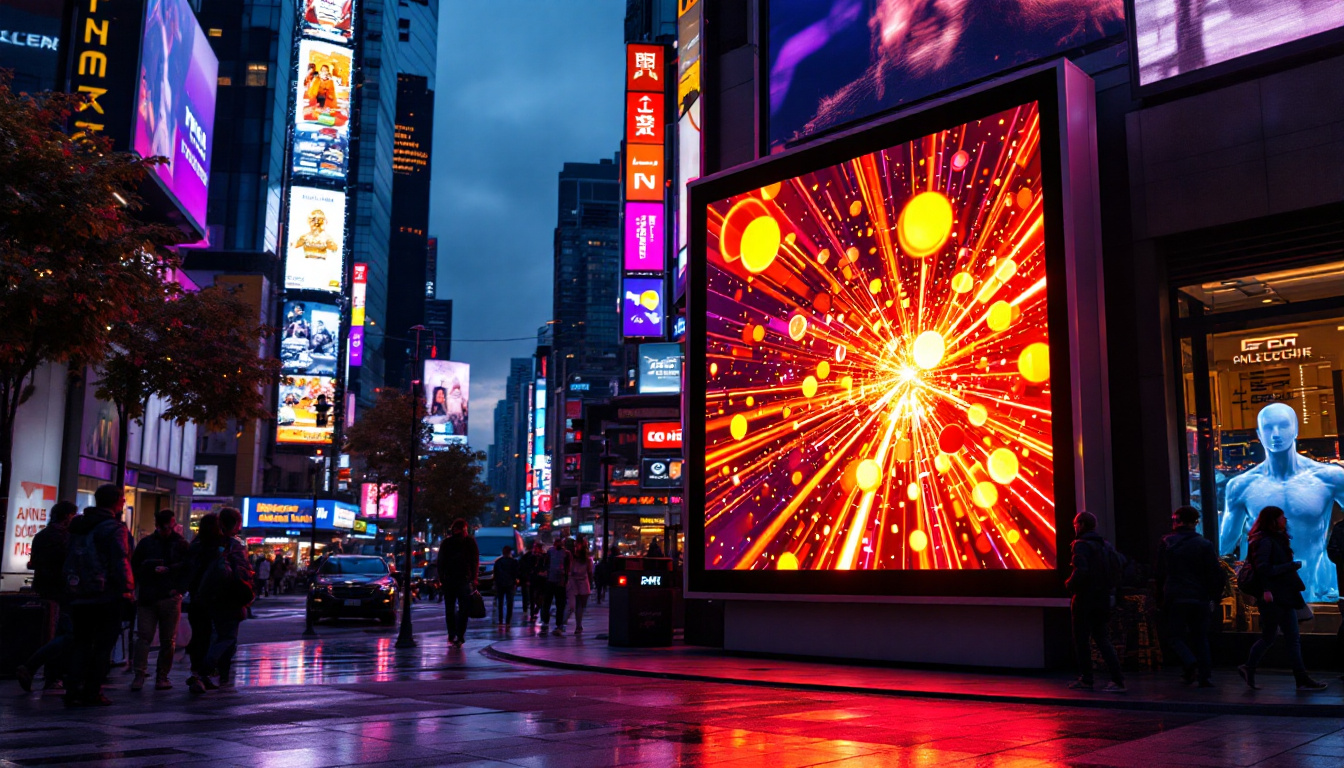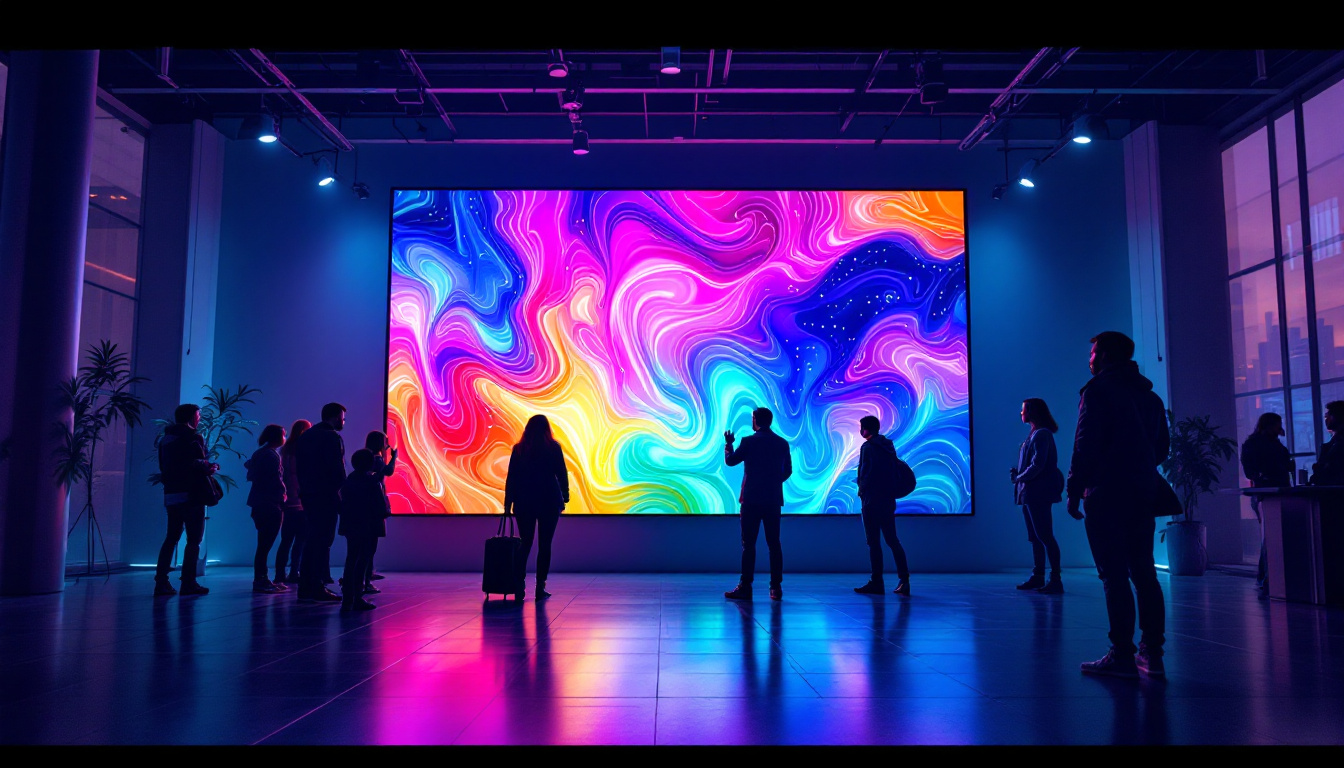In the world of digital displays, the quest for high-quality visuals is never-ending. One of the most sought-after resolutions is 1080p, commonly referred to as Full HD. This article delves into the intricacies of LED displays, exploring how they function, their advantages, and how they contribute to achieving stunning 1080p video quality.
Understanding LED Displays
Light Emitting Diodes (LEDs) have revolutionized the way images and videos are displayed. Unlike traditional LCD screens, which rely on a backlight to illuminate pixels, LED displays utilize individual diodes to produce light. This fundamental difference allows for greater control over brightness and color accuracy, making LED technology a preferred choice for high-definition displays.
How LED Technology Works
At its core, an LED display consists of numerous tiny diodes that emit light when an electric current passes through them. These diodes are arranged in a grid, with each pixel typically made up of red, green, and blue (RGB) sub-pixels. By adjusting the intensity of each sub-pixel, a wide range of colors can be produced, resulting in vibrant and lifelike images.
The process of creating a 1080p video involves displaying 1920 pixels horizontally and 1080 pixels vertically. This resolution provides a total of over 2 million pixels, allowing for intricate details to be rendered. The ability of LED displays to control each pixel individually is what sets them apart, enabling them to achieve the clarity and sharpness associated with Full HD. Furthermore, advancements in technology have led to the development of 4K and even 8K LED displays, which boast even higher pixel densities and improved detail, making them ideal for professional applications such as graphic design and video editing.
The Advantages of LED Displays
LED displays offer several advantages over traditional display technologies. One of the most significant benefits is their energy efficiency. LEDs consume less power compared to other display types, which not only reduces electricity costs but also contributes to a lower carbon footprint.
Additionally, LED displays provide superior brightness and contrast ratios. This means that even in well-lit environments, images remain clear and vibrant. The ability to produce deeper blacks and brighter whites enhances the overall viewing experience, making LED displays ideal for a variety of applications, from home theaters to commercial advertising. Moreover, LED technology is highly versatile; it can be used in various formats, including flexible screens that can bend and curve, making it suitable for innovative design solutions in retail spaces and architectural installations. The durability of LED displays also cannot be overlooked; they are less susceptible to damage from impacts and can withstand harsh environmental conditions, making them a reliable choice for outdoor signage and events.
The Importance of 1080p Resolution
Resolution plays a crucial role in the quality of video content. 1080p, or Full HD, has become the standard for high-definition viewing, providing a significant upgrade over its predecessor, 720p. The increase in pixel density allows for more detail to be captured, resulting in sharper images and smoother motion.
Benefits of 1080p Video Quality
One of the primary benefits of 1080p video quality is the enhanced clarity it provides. Viewers can appreciate finer details in scenes, whether it’s the texture of a fabric or the subtle expressions on a character’s face. This level of detail is particularly important in cinematic experiences, where immersion is key. The vibrant colors and contrast that 1080p offers also contribute to a more engaging viewing experience, allowing filmmakers to convey their artistic vision more effectively. Whether it’s a dramatic sunset or an action-packed sequence, the richness of 1080p can make all the difference in how a story is perceived.
Moreover, 1080p resolution is widely supported across various platforms and devices, making it accessible to a broad audience. From streaming services to Blu-ray discs, content is readily available in Full HD, ensuring that viewers can enjoy high-quality video without compatibility issues. Additionally, many modern televisions and monitors are optimized for 1080p, providing features like upscaling and motion smoothing that enhance the viewing experience even further. This widespread compatibility also means that consumers can easily find a range of devices that suit their needs, whether they prefer watching on a large screen at home or on a portable device while on the go.
Comparing 1080p to Other Resolutions
While 1080p is a popular choice, it’s important to understand how it stacks up against other resolutions. For instance, 4K resolution, which offers four times the pixel count of 1080p, is becoming increasingly common. However, the benefits of 4K may not be noticeable on smaller screens or from a standard viewing distance. Furthermore, the availability of 4K content is still growing, and many viewers may find that 1080p provides a more than satisfactory experience for most of their viewing needs.
On the other hand, 720p, while still considered HD, lacks the clarity and detail that 1080p provides. For those who prioritize visual quality, 1080p remains a sweet spot, balancing performance and accessibility. It is particularly favored in gaming, where fast-paced action and intricate graphics benefit greatly from the increased resolution. Gamers often prefer 1080p for its ability to deliver smooth frame rates and responsive gameplay, making it a popular choice for competitive gaming. As technology continues to evolve, 1080p stands as a reliable option for both casual viewers and dedicated enthusiasts alike, ensuring that high-definition content remains within reach for everyone.
How to Achieve 1080p on LED Displays
Achieving 1080p quality on LED displays involves several factors, from the source of the content to the settings of the display itself. Understanding these elements can help maximize the viewing experience and ensure that the full potential of 1080p is realized.
Choosing the Right Source
The source of the video content is critical in achieving 1080p resolution. Streaming platforms, Blu-ray players, and gaming consoles all offer 1080p content, but not all sources are created equal. It’s essential to ensure that the device being used supports Full HD output.
For instance, while many streaming services offer 1080p content, the quality can vary based on the internet connection and the device used for playback. A stable and high-speed internet connection is necessary to stream 1080p video smoothly without buffering or interruptions.
Optimizing Display Settings
Once the source is determined, optimizing the settings on the LED display can significantly enhance the viewing experience. Most modern LED displays come equipped with various settings that allow users to adjust brightness, contrast, and color saturation.
For instance, calibrating the display to match the lighting conditions of the room can make a substantial difference. In darker environments, lowering the brightness can reduce eye strain and improve contrast, while in brighter settings, increasing brightness can help maintain clarity.
Common Applications of 1080p LED Displays
1080p LED displays are utilized in a wide range of applications, each benefiting from the clarity and vibrancy that this resolution offers. From home entertainment systems to commercial use, the versatility of LED technology makes it a popular choice.
Home Entertainment
In the realm of home entertainment, 1080p LED displays have become a staple. Whether it’s for watching movies, playing video games, or streaming content, the immersive experience provided by Full HD resolution enhances enjoyment. The sharpness and color accuracy of LED displays bring films and games to life, making them a favorite among enthusiasts.
Moreover, many modern televisions are equipped with smart technology, allowing users to access streaming services directly. This convenience, combined with the high-quality visuals of 1080p, creates a compelling reason for consumers to invest in LED displays for their homes.
Commercial Use
Beyond personal use, 1080p LED displays are extensively used in commercial settings. Retail stores, restaurants, and corporate environments leverage the visual appeal of LED technology to engage customers and convey information effectively. digital signage, for example, benefits from the clarity and brightness of 1080p displays, capturing attention and delivering messages in a visually appealing manner.
Additionally, in the realm of advertising, high-definition visuals can significantly impact consumer behavior. Studies have shown that vibrant, clear displays can enhance brand perception and increase sales, making 1080p LED displays a valuable asset for businesses.
The Future of LED Displays and 1080p Resolution
As technology continues to evolve, the future of LED displays and video resolution looks promising. With advancements in display technology, consumers can expect even better quality and performance in the coming years.
Emerging Technologies
One of the most exciting developments in display technology is the rise of MicroLED and OLED displays. These technologies offer improved color accuracy, contrast ratios, and energy efficiency compared to traditional LED displays. While 1080p remains a popular resolution, future advancements may push the boundaries of what is possible, with higher resolutions like 4K and 8K becoming more mainstream.
Moreover, as virtual reality (VR) and augmented reality (AR) technologies gain traction, the demand for high-resolution displays will only increase. These immersive experiences require displays that can deliver exceptional quality, making 1080p and beyond essential in the future landscape of visual technology.
Conclusion
In conclusion, 1080p LED displays represent a significant advancement in video technology, offering clear, vibrant images that enhance the viewing experience. Understanding how LED technology works, the benefits of 1080p resolution, and the various applications of this technology can help consumers make informed decisions when it comes to selecting displays for personal or commercial use.
As the industry continues to innovate, the future of LED displays and video quality looks bright. Whether for entertainment, advertising, or communication, the combination of LED technology and high-definition resolution will undoubtedly play a crucial role in shaping the visual experiences of tomorrow.
Discover the Future of High-Definition with LumenMatrix
Ready to elevate your visual experience with the clarity and vibrancy of 1080p LED displays? LumenMatrix is at the forefront of LED display innovation, offering a wide array of solutions that cater to your unique needs. From captivating Indoor and Outdoor LED Wall Displays to dynamic Vehicle and Sports LED Displays, and even customizable options like Floor and Transparent LED Displays, LumenMatrix has the technology to bring your vision to life. Embrace the future of visual communication and check out LumenMatrix LED Display Solutions today to create unforgettable visual experiences that engage and inspire.

